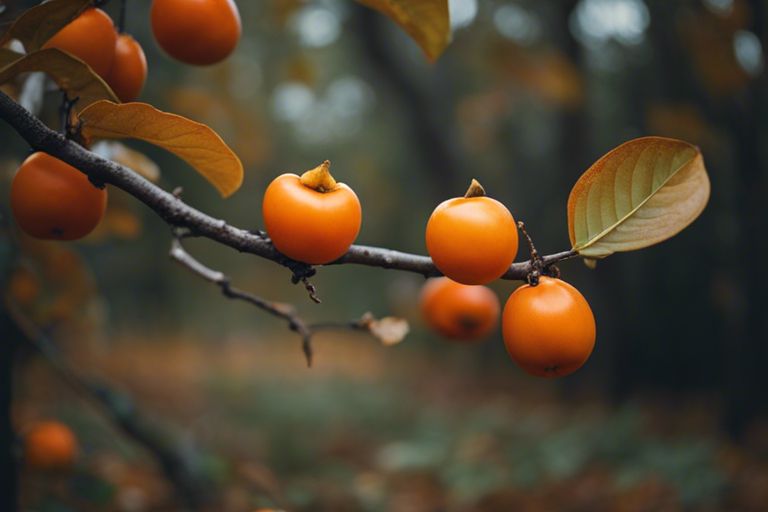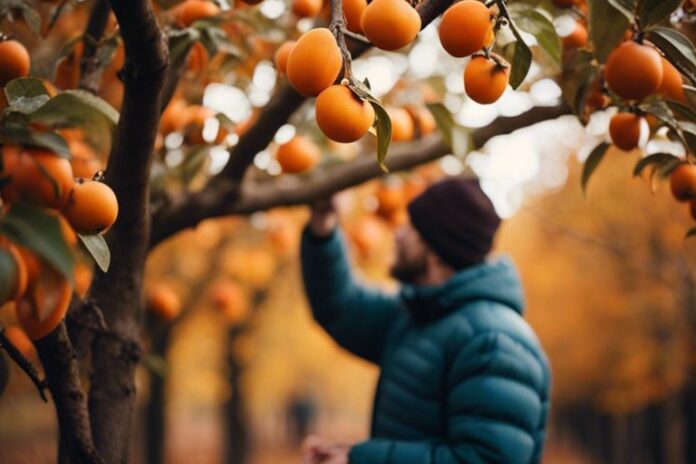Most nature enthusiasts come across wild persimmons in their outdoor explorations, but few recognize their distinctive features and versatile uses. In this guide, we will examine into the identification of wild persimmon trees, ripe fruits, and the caution required when foraging for these delicious treats. Additionally, we will uncover the culinary uses and health benefits of wild persimmons, enhancing your appreciation for this remarkable fruit found in the wild.
Key Takeaways:
- Wild Persimmons are small, orange fruits that grow on trees and are commonly found in Eastern North America.
- Identifying Wild Persimmons involves looking at the tree’s leaves, bark, and fruit to distinguish them from non-edible varieties.
- Harvesting Wild Persimmons when they are ripe or slightly overripe ensures they are sweet and flavorful for consumption.
- Using Wild Persimmons in recipes such as jams, jellies, baked goods, or eaten raw provides a unique, sweet flavor with hints of honey and apricot.
- Health Benefits of Wild Persimmons include being high in antioxidants, fiber, and vitamins A and C, making them a nutritious addition to your diet.

Getting to Know the Wild Persimmon
Botanical Characteristics
Getting acquainted with the wild persimmon starts with understanding its botanical characteristics. Your wild persimmon tree is a deciduous tree that can grow up to 20-60 feet tall. The leaves are alternate, simple, and oval in shape with serrated edges. In spring, small bell-shaped flowers bloom, eventually giving way to the fruit – the beloved persimmon.
Habitat and Distribution
Wild persimmons can be found in various habitats across the United States, including forests, woodlands, and even along roadsides. They are most commonly spotted in the eastern and central regions of the country. These trees thrive in rich, well-drained soils and are often found in areas with plenty of sunlight.
Habitat: The wild persimmon tree (Diospyros virginiana) is well-adapted to a wide range of environments, but it tends to favor locations where it can receive ample sunlight and grow in rich, well-drained soils. While they can be found in forests and woodlands, they are also known to thrive along roadsides and in clearings.
Identification Techniques
Seasonal Guide to Identifying Wild Persimmons
The key to identifying wild persimmons lies in understanding their seasonal characteristics. For beginners, in the spring, look for small clusters of white flowers on the trees, followed by green fruit in the summer which slowly transitions to a vibrant orange color in the fall. The shape of the leaves can also help differentiate wild persimmon trees from others, as they are oval with pointed tips.
Mistaken Identities: Avoiding Common Confusions
Mistaken identities can lead to potential dangers or missed opportunities for foraging. Some common trees that are often mistaken for wild persimmons include black gum and sweet gum trees. To avoid confusion, remember that wild persimmons have smooth, gray bark and are typically smaller in size compared to other similar-looking trees. Also, pay attention to the fruit’s color and shape, as wild persimmons have a distinct round, orange fruit when ripe.
Avoiding mistaken identities is crucial for a safe and successful foraging experience. Always consult multiple reliable sources or experts before consuming any wild fruit or plant to ensure accurate identification. Being aware of look-alike species and their distinguishing features can prevent harmful or disappointing mistakes in the wild.
Harvesting and Preparation
Best Practices for Harvesting Wild Persimmons
Keep in mind that wild persimmons are best harvested when they are fully ripe and have turned a deep orange color. Look for fruits that are soft to the touch and easily detach from the tree with a gentle twist. It’s important to only pick the ripe fruits as unripe persimmons can be astringent and unpleasant to taste. Bring a basket or bag to collect the harvested persimmons, being careful not to bruise or damage the delicate fruit in the process.
Cleaning and Storing for Optimal Freshness
Any harvested wild persimmons should be carefully cleaned to remove dirt, debris, and any insects that may have hitched a ride. Rinse the fruit gently under cool water and pat dry with a clean cloth. To store wild persimmons for optimal freshness, place them in a single layer in a shallow container and cover with a paper towel to absorb excess moisture. Store in the refrigerator for up to a week.
Culinary and Medicinal Uses
Traditional and Modern Recipes
Not just enjoyed straight from the tree, wild persimmons are versatile in the kitchen. From traditional jams and preserves to modern culinary creations like persimmon salsa or roasted persimmon salad, these fruits offer a unique sweetness and texture to a wide range of dishes.
Health Benefits and Nutritional Profile
The health benefits of wild persimmons are vast, with a high content of antioxidants, vitamins A and C, and fiber. These fruits are known to support heart health, aid digestion, and even boost the immune system. Additionally, persimmons are a low-calorie source of important nutrients, making them a great addition to a balanced diet.
The medicinal properties of wild persimmons have been used for centuries in traditional medicine. Persimmons contain compounds that have anti-inflammatory and anti-cancer properties. They are also known to help lower blood pressure and improve eye health due to their high antioxidant content.
Summing up
With this in mind, learning to identify and use wild persimmons can be a rewarding experience for foragers and nature enthusiasts. By understanding the characteristics of these fruit-bearing trees and knowing how to differentiate between the two main species, individuals can enjoy the delicious flavors of ripe persimmons while avoiding the astringency of unripe fruit. Whether seeking out persimmons for their culinary uses or simply to appreciate their beauty in the wild, this guide provides valuable information for those interested in discovering and utilizing wild persimmons to their fullest potential.
FAQ
Q: What are wild persimmons?
A: Wild persimmons are fruit-bearing trees native to North America, belonging to the genus Diospyros. They produce small, round fruits that vary in color from yellow to orange when ripe.
Q: How can I identify wild persimmon trees?
A: Wild persimmon trees can be identified by their distinct dark, checkered bark and their oblong-shaped leaves with pointed tips. They typically bear small, bell-shaped flowers in the spring, followed by clusters of green fruit that ripens to a yellow-orange color in the fall.
Q: What are the uses of wild persimmons?
A: Wild persimmons can be eaten fresh or used in various culinary applications, including jams, jellies, pies, and baked goods. They are also dried to make a sweet snack and can be fermented to make persimmon wine. Additionally, the wood of the persimmon tree is valued for its strength and durability, often used in woodworking projects.

